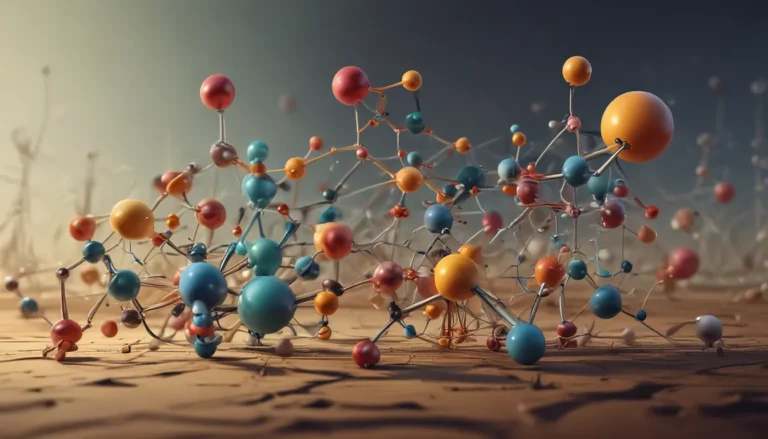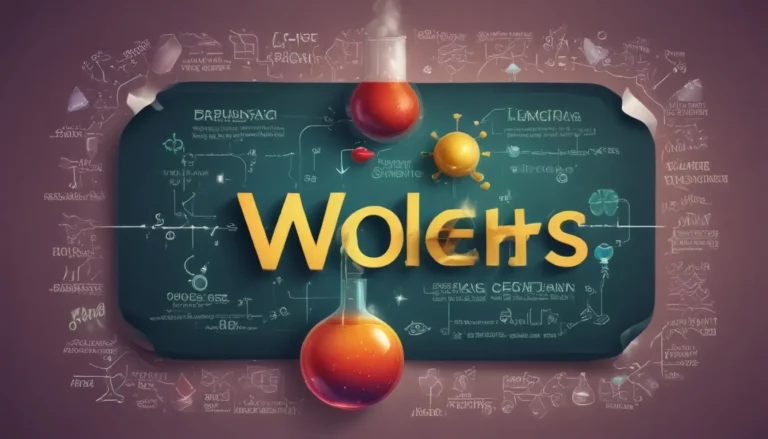A Note About Images: The images used in our articles are for illustration purposes only and may not exactly match the content. They are meant to engage readers, but the text should be relied upon for accurate information.
Chemical reactions are a fascinating world where reducing agents play a crucial role in driving processes forward by facilitating electron transfer. Whether you have a passion for chemistry or simply a curious mind, delving into the realm of reducing agents can captivate your interest. In this article, we will uncover 20 fascinating facts about reducing agents that will deepen your understanding of their significance and applications in various fields. From their essential role in industrial processes to their presence in everyday life, reducing agents are key components in the intricate world of science. Let’s embark on a journey to explore the secrets behind the incredible properties of reducing agents.
Key Takeaways:
- Reducing agents are pivotal in chemical reactions, acting as electron donors to transform substances in industries like metallurgy and pharmaceuticals.
- They are also prevalent in daily life, from food preservation to photography, and even in our bodies as antioxidants that safeguard our cells from damage.
Definition of a Reducing Agent
A reducing agent, also known as a reductant, is a substance that donates electrons during a chemical reaction, leading to the reduction of another reactant.
Key Role in Redox Reactions
Reducing agents are indispensable in redox (reduction-oxidation) reactions, where they facilitate the reduction of the oxidizing agent by losing electrons.
Electron Donors
Reducing agents function as electron donors by providing electrons to other chemical species in a reaction, resulting in their reduction.
Common Reducing Agents
Some common reducing agents encompass hydrides like Lithium aluminum hydride, metal ions such as Fe2+, alkali metals like sodium and potassium, and organic compounds including alcohols and aldehydes.
Types of Reducing Agents
Reducing agents are classified into strong reducing agents, which readily donate electrons, and weak reducing agents, which donate electrons less easily.
Industrial Applications
Reducing agents find applications in diverse industries such as metallurgy, pharmaceuticals, organic synthesis, and photography.
Role in Metallurgy
In metallurgy, reducing agents are utilized to extract metals from their ores by reducing the metal ions present in ores to their elemental forms.
Importance in Organic Synthesis
Reducing agents are extensively employed in organic synthesis to convert functional groups and facilitate the formation of desired products.
Biological Function
Reducing agents play a vital role in biological systems, participating in various cellular processes including metabolism and energy production.
Balancing Redox Equations
Reducing agents are crucial for balancing redox equations, ensuring that the number of electrons lost during oxidation matches those gained during reduction.
Oxidation State Changes
During redox reactions, reducing agents undergo oxidation themselves, experiencing a change in oxidation state by losing electrons.
Role in Photography
Developing solutions in photography often contain reducing agents that assist in reducing exposed silver halide crystals into metallic silver, forming the captured image.
Reducing Agents in Medicinal Chemistry
Reducing agents have valuable applications in medicinal chemistry, aiding in the conversion of functional groups to create specific pharmacologically active compounds.
Environmental Significance
Reduction reactions catalyzed by reducing agents play a crucial role in environmental processes, including the breakdown of pollutants and detoxification of harmful compounds.
Reducing Agents in Fuel Cells
Hydrogen gas serves as a reducing agent in fuel cells, undergoing oxidation to generate electrical energy.
Reducing Agents as Flame Retardants
In certain applications, reducing agents can function as flame retardants by inhibiting the combustion process.
Reducing Agents and Antioxidants
Many antioxidants in our diet, such as vitamin C and vitamin E, act as reducing agents that neutralize free radicals and protect our cells from oxidative damage.
Reducing Agents in Food Preservation
Reducing agents are commonly used in food preservation to prevent spoilage and maintain the freshness of certain products.
Compatibility with Oxidizing Agents
Reducing agents and oxidizing agents are often used together in chemical reactions to facilitate electron transfer and achieve desired transformations.
Safety Considerations
Proper safety protocols must be followed when handling reducing agents, as some agents can be highly reactive or even explosive under certain conditions.
Understanding the properties and applications of reducing agents sheds light on their significant role in chemistry, industry, and daily life. Delving deeper into the captivating world of reducing agents allows us to appreciate the complexity of chemical reactions and electron transfer processes.
Conclusion
In conclusion, reducing agents are indispensable in various chemical reactions, serving a wide range of applications in the realm of chemistry. Their ability to donate electrons and participate in redox reactions makes them fascinating substances with diverse uses. From acting as antioxidants to aiding in metal production, reducing agents play a pivotal role in numerous industrial processes and biological systems. As we continue to explore the realm of chemistry, the study of reducing agents offers exciting avenues for discovery and advancement. By harnessing the power of reducing agents, researchers and scientists can unlock new possibilities in the field of chemistry.
FAQs
- What is a reducing agent?
-
A reducing agent is a substance that donates electrons to another chemical species, facilitating reduction in redox reactions.
-
How do reducing agents work?
-
Reducing agents work by donating electrons to substances in a chemical reaction, reducing the oxidation state of other compounds.
-
What are some common examples of reducing agents?
-
Common examples of reducing agents include hydrogen gas (H2), sodium borohydride (NaBH4), and sodium sulfite (Na2SO3), widely used in various chemical processes.
-
Can reducing agents be harmful?
-
While reducing agents can be reactive and hazardous, following safety guidelines and precautions can minimize risks associated with their handling.
-
What are the applications of reducing agents?
- Reducing agents are utilized in the production of metals, organic compound synthesis, and purification processes in industries like metallurgy and pharmaceuticals.
Embark on a journey through the wonders of reducing agents and gain a deeper understanding of their essential role in chemical reactions and beyond. The captivating world of chemistry awaits exploration, offering endless possibilities for discovery and advancement. Dive into the realm of reducing agents and unlock the secrets of their fascinating properties and applications.
Was this page helpful?
Our commitment to delivering trustworthy and engaging content is paramount. Each fact shared on our site is contributed by real users like you, ensuring diverse insights and reliable information. With dedicated editors rigorously reviewing each submission, we guarantee the accuracy and credibility of the facts we share. Trust in our dedication to quality and authenticity as you embark on a journey of exploration and learning with us.





